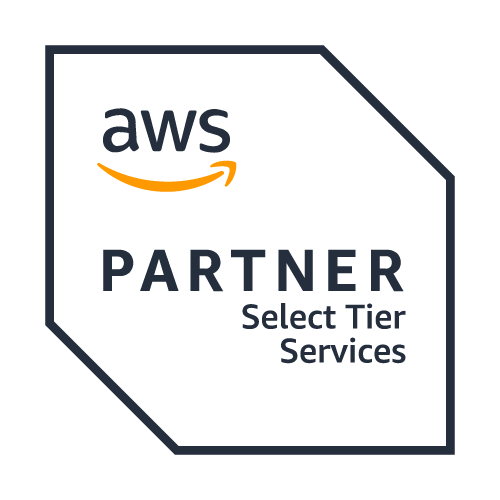
Share
Multi-Cloud Management & Optimization Strategies: Streamlining Your Cloud Infrastructure
Among the most recent technological developments are augmented reality (AR) and virtual reality (VR), which have the potential to revolutionize the way we interact with the world around us. These technologies offer unique and immersive experiences that allow us to see, hear, and feel things in ways that were once impossible. In this blog article, we’ll explore the basics of AR and VR, how they work, and the ways in which they’re transforming the way we live and work. This blog post will discuss multi-cloud, why organizations need it, multi-cloud management and optimization techniques and how they can help streamline your cloud infrastructure.
What is Multi-Cloud?
Multi-cloud is an IT strategy that involves using two or more cloud providers to meet different business needs. The multi-cloud approach helps organizations avoid vendor lock-in, improve resilience, and leverage the unique capabilities of each cloud provider. The most common multi- cloud configurations are:
Hybrid Cloud:
A combination of public and private clouds that work together to provide a seamless computing environment.
Multi-Cloud:
The use of multiple public cloud services from different vendors to provide redundancy and flexibility.
Why do organizations need Multi-cloud?
Cloud computing has become an essential technology for organizations of all sizes. Cloud computing offers significant benefits such as flexibility, scalability, and cost-effectiveness. With a hybrid cloud model, where organizations use a combination of public and private cloud resources, there is often a need for secure and performant connectivity between different cloud environment.
In such scenarios, private dedicated network connections can help to achieve both performance and security. Cloud Service Providers (CSPs) offer several options for dedicated network connections that enable organizations to connect their on-premises data centers or private clouds to their public cloud environments securely.

Direct Connect and ExpressRoute are two such options, provided by Amazon Web Services (AWS) and Microsoft Azure, that provide dedicated, high- bandwidth connections between different cloud environments. These connections offer several benefits, such as, Improved performance, Enhanced security, Cost savings, Scalability.As organizations grow and their cloud infrastructure becomes more complex, they may face challenges such as vendor lock-in, limited features, and high costs.That’s where multi-cloud comes in. Multi-cloud is the use of multiple cloud service providers (CSPs) to build a comprehensive cloud infrastructure. Let’s take a closer look at some of the reasons why organizations need multi-cloud.

1. Client preferences
One of the primary reasons why organizations need multi-cloud is to meet the specific needs of their clients. Different clients have different preferences for cloud service providers, and by using multiple CSPs, organizations can cater to a broader range of clients.
2. Legacy applications
Many organizations have legacy applications that were built for a specific cloud platform. By using multi-cloud, they can continue to use these applications while also taking advantage of new cloud technologies.
3. Disaster Recovery
In the event of a disaster, it’s critical for organizations to have a backup plan in place. By using multi-cloud, organizations can replicate their data across multiple CSPs, ensuring that they have a backup in case of a disaster.
4. Avoid vendor lock-in
Vendor lock-in is a common challenge that organizations face when using a single CSP. By using multiple CSPs, organizations can avoid being locked into a single vendor and have more leverage in negotiations.
5. Cost efficiency
Cost is always a concern for organizations, and by using multi-cloud, they can take advantage of the strengths of each CSP while minimizing their weaknesses. For example, they can use one CSP for storage and another for computing, resulting in a more cost-effective cloud infrastructure.
6. Compliance requirements
Different CSPs have different compliance requirements. By using multi-cloud, organizations can ensure that they meet the specific compliance requirements of their industry.
Cloud Agnostic Services
Cloud agnostic services such as containers and Kubernetes enable organizations to build and deploy applications across multiple cloud platforms without being tied to a specific vendor. They provide flexibility, cost savings, and seamless migration capabilities, making them an ideal choice for achieving cloud agnosticism. As organizations adopt cloud computing, cloud agnostic services will become increasingly important for building and deploying applications in a multi- cloud environment.
Containers
Containers are a form of virtualization that provides a lightweight, portable, and isolated environment for running applications. They can be built once and deployed anywhere, making them ideal for organizations that want to achieve cloud agnosticism. One of the most popular container technologies is Docker, which enables developers to package their applications along with all the necessary dependencies and run them consistently across different environments. Docker images can be deployed across multiple cloud plaforms, enabling organizations to be truly cloud agnostic.

Kubernetes
Kubernetes is an open-source container orchestration platform that enables organizations to manage and deploy containerized applications across multiple cloud platforms. It provides a consistent platform for managing and scaling containers, making it easier for organizations to achieve cloud agnosticism. With Kubernetes, organizations can deploy their applications across different cloud platforms without having to worry about the underlying infrastructure.
Multi-Cloud Management
Managing multiple clouds can be challenging due to the complexity of the infrastructure and the variety of services offered by different cloud providers. Multi-cloud management is the process of overseeing and optimizing the infrastructure, applications, and data spread across multiple clouds. The goal of multi-cloud management is to ensure consistent performance, security, and cost optimization. Here are some multi-cloud management Strategies that can help streamline your cloud infrastructure:

Cloud Management Platforms
Cloud management platforms (CMPs) are tools that provide a single-pane-of-glass view of an organization’s entire cloud infrastructure, regardless of the cloud providers they are using. CMPs allow organizations to manage their cloud resources, including application deployment, service provisioning, monitoring, and cost optimization, from a single interface. CMPs help simplify the management of multi-cloud environments and improve operational efficiency. They provide a unified view of the infrastructure and enable organizations to monitor performance, security, and compliance across multiple clouds.
Cloud Governance
Cloud governance is the process of establishing policies, procedures, and controls to ensure that the cloud environment is secure, compliant, and optimized for cost and performance.Governance is critical in a multi-cloud environment, as it helps organizations maintain consistency and enforce best practices across multiple clouds.
Cloud Cost Optimization
Cost optimization is a critical component of cloud management, as cloud costs can quickly spiral out of control in a multi-cloud environment. Organizations need to take a strategic approach to cloud cost optimization, which involves:

- Monitoring cloud costs across multiple clouds
- Analyzing cloud usage to identify areas of waste
- Rightsizing cloud resources to match demand
- Leveraging discounts and cost-saving opportunities offered by cloud providers
- Implementing automated cost optimization tools
Cloud cost optimization can help organizations save significant amounts of money while improving the efficiency of their cloud infrastructure.
Multi-Cloud Optimization
Multi-cloud optimization involves ensuring that applications and data are deployed in the most efficient way across multiple clouds. Optimization is critical in a multi-cloud environment, as it helps organizations avoid performance issues, downtime, and data loss. Here are some multi-cloud optimization techniques that can help streamline your cloud infrastructure:
Load Balancing
Load balancing involves distributing network traffic across multiple servers to improve performance and avoid overloading any single server. In a multi-cloud environment, load balancing can help organizations balance traffic across multiple clouds and ensure consistent performance. Load balancing can be achieved using hardware load balancers or cloud-native load balancing solutions provided by cloud providers.
Optimize Workloads Across Multiple CSPs
Different CSPs have different strengths and weaknesses when it comes to performance, cost- effectiveness, and scalability. Optimizing workloads across multiple CSPs can help to take advantage of the strengths of each CSP and improve performance while reducing costs.For example, an organization may choose to host its compute-intensive workloads on a CSP that offers high-performance computing (HPC) capabilities, while hosting its storage-intensive workloads on a CSP that offers cost-effective storage options. This approach can help to reduce costs while improving performance.
Implement Cost Management Strategies
Cost management is an essential aspect of multi-cloud optimization. Organizations need to ensure that they are using cloud resources in a cost-effective manner. Cloud cost management tools can help organizations to identify areas where costs can be reduced and optimize resource allocation.Cost management tools can identify instances that are running 24/7 but are only used during business hours, and can recommend shutting down these instances outside of business hours to reduce costs. Cost management tools can also identify underutilized instances and recommend downsizing or terminating these instances to reduce costs.
Implement Multi-Cloud Security
Implementing multi-cloud security strategies can help organizations to improve security and compliance across multiple clouds. Multi-cloud security strategies involve implementing consistent security policies across multiple clouds, using encryption to protect data in transit and at rest, and monitoring for security threats across multiple clouds. Implementing multi- cloud security can help organizations to ensure that data is secure and compliant with regulatory requirements across multiple clouds.
Utilize Cloud Orchestration
Cloud orchestration involves automating the process of deploying and managing resources across multiple clouds. Cloud orchestration can help organizations to optimize resource allocation, improve performance, and reduce costs by automating the process of deploying and managing resources across multiple clouds.Cloud orchestraon tools can help organizaons to deploy and manage resources across multiple clouds automacatically, saving me and reducing the likelihood of errors.Cloud orchestration tools can also help to opmtimize resource allocaon by automatically allocating resources based on workload demand.

Use Cloud Bursting
Cloud bursting is a technique that involves using additional resources from a CSP to handle sudden increases in demand. Cloud bursting can help organizations to improve performance and reduce costs by allowing them to scale up resources when they are needed. Cloud bursting involves setting up an auto-scaling policy that automatically allocates additional resources when demand exceeds a certain threshold. The auto-scaling policy can be set up to use resources from a different CSP, allowing organizations to take advantage of the strengths of multiple CSPs.
Wrapping Up
As cloud technology continues to evolve, it is essential for organizations to stay on top of multi- cloud optimization techniques to remain competitive and ensure that their cloud infrastructure is efficient and effective. Multi-cloud optimization is critical for organizations that are leveraging multiple cloud service providers. By implementing multi-cloud management and optimization techniques, organizations can achieve significant benefits in terms of performance, cost- effectiveness, and security. By taking a comprehensive and strategic approach to multi-cloud management and optimization, businesses can streamline their cloud infrastructure, improve their bottom line, and focus on their core business goals. With the right techniques in place, organizations can focus on delivering value to their customers, rather than worrying about managing and optimizing their cloud resources.
Cloud Destinations is an industry leader with a wide range of expert teams who helps businesses to implement the cutting-edge technologies in their core systems and helps them to achieve their business goals. Check our website at https://clouddestinations.com for further details or write to us at info@clouddestinations.com for any query.
 Back
Back














 Linkedin
Linkedin








